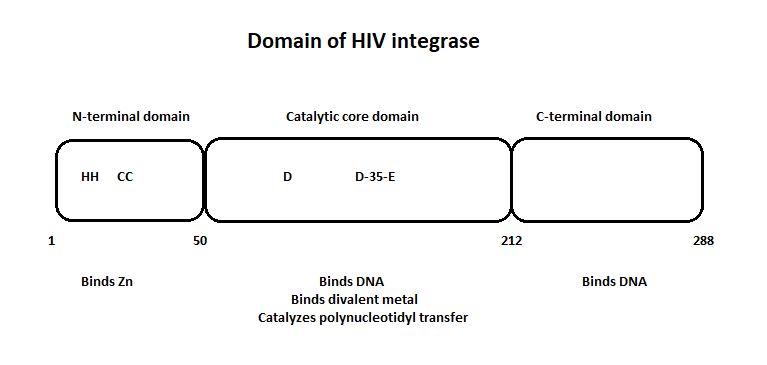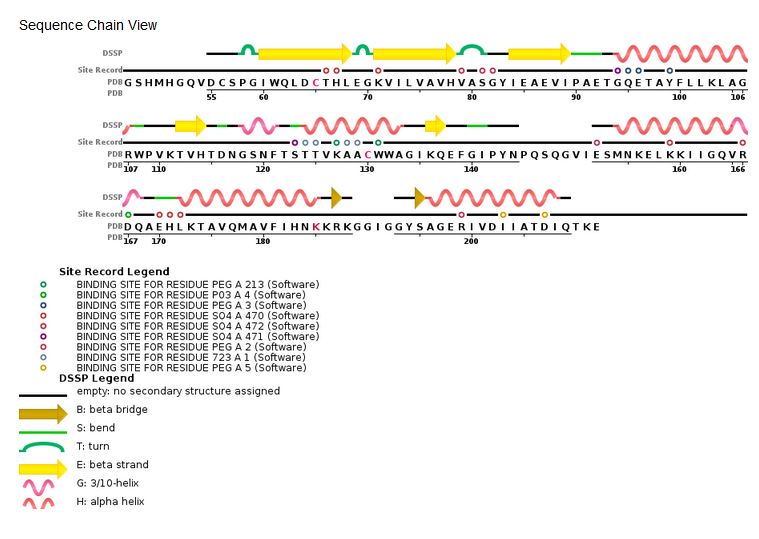Sandbox Reserved 1502
From Proteopedia
(Difference between revisions)
| Line 1: | Line 1: | ||
{{Sandbox_Reserved_ESBS}}<!-- PLEASE ADD YOUR CONTENT BELOW HERE --> | {{Sandbox_Reserved_ESBS}}<!-- PLEASE ADD YOUR CONTENT BELOW HERE --> | ||
=='''3lpt - HIV integrase'''== | =='''3lpt - HIV integrase'''== | ||
| + | |||
<StructureSection load='3lpt' size='340' side='right' caption='[[3lpt]], [[Resolution|resolution]] 2.00Å' scene=''> | <StructureSection load='3lpt' size='340' side='right' caption='[[3lpt]], [[Resolution|resolution]] 2.00Å' scene=''> | ||
3lt is an integrase of the HIV, the Human Immunodeficiency Virus. An integrase is an enzyme produced by a retrovirus to integrate its genetic material into the DNA of the infected cell. It is one of three enzymes of HIV, the others being the Reverse Transcriptase and the Protease. | 3lt is an integrase of the HIV, the Human Immunodeficiency Virus. An integrase is an enzyme produced by a retrovirus to integrate its genetic material into the DNA of the infected cell. It is one of three enzymes of HIV, the others being the Reverse Transcriptase and the Protease. | ||
| Line 37: | Line 38: | ||
AIDS is the ultimate stage of infection with the human immunodeficiency virus. The word AIDS stands for for Acquired Immunodeficiency Syndrome. People with AIDS get an increasing number of severe illnesses, called opportunistic infections, because of there damaged immune system. You are considered to have progressed to AIDS when the number of your CD4 cells falls below 200 cells per cubic millimeter of blood (200 cells/mm3). (In someone with a healthy immune system, CD4 counts are between 500 and 1,600 cells/mm3.) You are also considered to have progressed to AIDS if you develop one or more opportunistic illnesses, regardless of your CD4 count.[https://www.hiv.gov/hiv-basics/overview/about-hiv-and-aids/what-are-hiv-and-aids] | AIDS is the ultimate stage of infection with the human immunodeficiency virus. The word AIDS stands for for Acquired Immunodeficiency Syndrome. People with AIDS get an increasing number of severe illnesses, called opportunistic infections, because of there damaged immune system. You are considered to have progressed to AIDS when the number of your CD4 cells falls below 200 cells per cubic millimeter of blood (200 cells/mm3). (In someone with a healthy immune system, CD4 counts are between 500 and 1,600 cells/mm3.) You are also considered to have progressed to AIDS if you develop one or more opportunistic illnesses, regardless of your CD4 count.[https://www.hiv.gov/hiv-basics/overview/about-hiv-and-aids/what-are-hiv-and-aids] | ||
| - | |||
| - | |||
| - | </StructureSection> | ||
<scene name='80/802676/Hiv_integrase_3lpt/8'>HIV Integrase 3lpt</scene> | <scene name='80/802676/Hiv_integrase_3lpt/8'>HIV Integrase 3lpt</scene> | ||
== References == | == References == | ||
Revision as of 16:45, 10 January 2019
| This Sandbox is Reserved from 06/12/2018, through 30/06/2019 for use in the course "Structural Biology" taught by Bruno Kieffer at the University of Strasbourg, ESBS. This reservation includes Sandbox Reserved 1480 through Sandbox Reserved 1543. |
To get started:
More help: Help:Editing |
3lpt - HIV integrase
| |||||||||||


